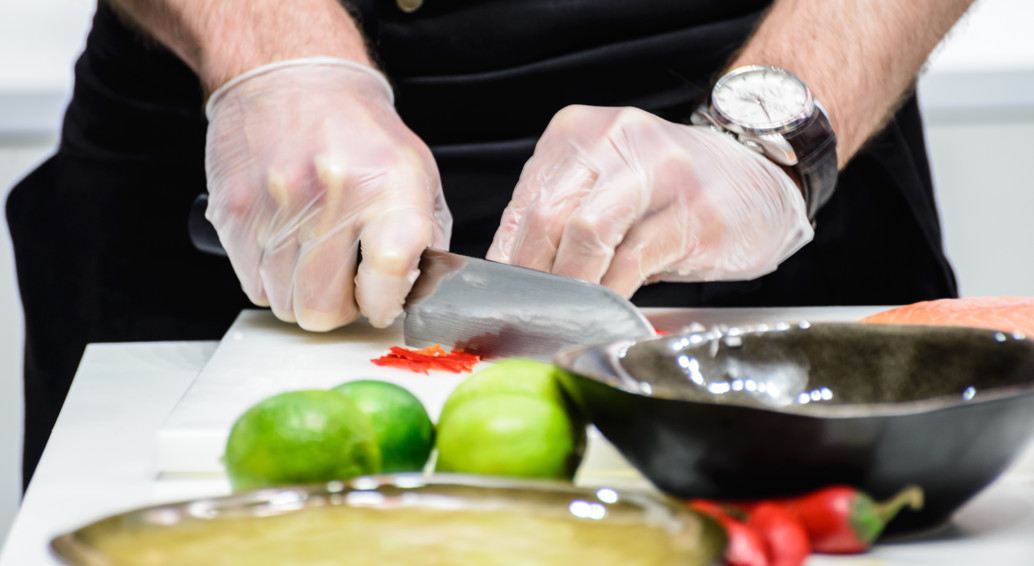Proper Glove Use

Key Training Tips to Keep Your Food Safe
According to the CDC, “Hand washing is the single most important means of preventing the spread of infection.” However, handwashing alone is not enough. Handwashing in combination with proper glove use is required for maximum safety.
Protect Yourself and the Consumer
• Washing hands thoroughly before and after wearing or changing gloves is one of the most important things food workers can do to reduce surface bacteria, sweat, dirt and grime build-up on skin and under nails.
• Scrub with a nailbrush (20 seconds), paying close attention to fingertips, especially after a trip to the restroom, before putting on new gloves.
• Always wash hands before and after using gloves.
Get the Right Fit
• Glove size is important for safety and comfort. Select the right size for your hand — from small to extra large.
• Gloves can be textured or embossed for improved grip, or smooth for ultimate feel and fit.
• If using a cut-resistant hand safety glove, see that it fits very snugly and does not extend over fingertips; clean and sanitize gloves for safer food handling.
Avoid Cross-Contamination
• If you handle raw meats, poultry, or seafood with gloves on, do not touch ready-to-eat or cooked foods without washing hands and changing gloves.
• Change gloves when you change activity (from making sandwiches to making change) or whenever you leave your workstation; wash hands in between.
• Wear task-specific colored gloves for cross-contamination prevention.
• When using a cut-resistant glove, wear a disposable glove on top to avoid cross-contamination.
Gloves Should Be Task-Specific
• Use gloves for designated food tasks only. Disposable gloves are task-specific and should never be worn continuously.
• Food contact gloves should not be used for non-food tasks such as handling money, garbage removal, cleaning surfaces, etc.
• The FDA code recommends no bare hand contact with ready-to-eat foods; therefore, use gloves with salad bar items, fruits, sandwiches, cooked foods, deli meats, cheeses, breads or ice.
• Use vinyl, synthetic or latex gloves when handling food near a heat source cooking area, rather than poly gloves, which are not resistant to heat.
• Non-latex gloves are recommended for food workers, to help avoid possible latex allergic reactions.
Change Gloves Often
• Change gloves periodically and wash hands each time.
• Change gloves after sneezing, coughing, or touching your hair or face.
• Always wear gloves if you have a bandage, infection, cut or sore and avoid direct food handling duties temporarily.
• To remove disposable gloves correctly, grasp at the cuff and peel them off inside-out.
• FDA Food Code states that workers wearing artificial nails or fingernail polish must wear disposable gloves.
How to Care for Gloves
• Wash, rinse and sanitize reusable heavy-duty safety gloves after each use.
• Do not reuse or wash disposable gloves — wash hands and use new disposable gloves.
• Keep gloves conveniently located at hand sinks and near workstations.